Lots of people love steak. You’ve noticed the different grades of meat at the grocery store. But Prime beef can be pricey leading many to wonder is Prime steak worth it?
While USDA Prime does taste great, USDA Choice Grass-Fed steaks tasted better. We also found that despite minor differences between Certified Angus USDA Choice and regular USDA Choice, and USDA Prime, there was not a big enough difference to warrant the large price increase. So no, USDA Prime probably isn’t worth it.
But that doesn’t tell the whole story!
For the purposes of this article, I bought 4 steaks that are otherwise identical, but one was USDA Choice, one was USDA Prime, one was grass-fed USDA Choice, and one was USDA Choice Angus. I cooked them exactly the same for the same length of time and the same preparation (just salt and pepper).

So down below in our video taste test challenge, you’ll see how each tastes compared to the other!
The best grade of beef is Prime. Organic grass-fed beef is premium in terms of meat quality, taste, and health. Unfortunately, Prime beef is only available in small quantities to grocers due to its premium price and low demand.
So is it worth the price? What about Angus beef? Is Angus comparable to Prime beef?
Are you ready to know all you need to know about Prime steak and whether it’s worth the price?
Just keep reading!
Is Choice or Prime beef better?
Prime beef is better than Choice beef. The grading system determines the quality rating based on the amount of marbling in the muscle and the age of the beef. Marbling is basically fat, and a fattier cut of meat means more fat rendering (melting) out of the steak as it cooks.
The United States Department of Agriculture (USDA) grades meat at the request of the meatpacker.
Traditionally a fattier cut of meat is richer and more flavorful. There are generally three USDA grades of beef that you would buy from the supermarket.
USDA Grading System
The USDA (United States Department of Agriculture) beef grading system evaluates and classifies beef based on its quality and consistency. It primarily focuses on two factors: marbling and maturity.
- Marbling: Marbling refers to the distribution of intramuscular fat within the beef cuts. More marbling generally results in juicier, more flavorful, and tender meat. The grading categories for marbling range from “Prime” (abundant marbling) to “Choice” (moderate marbling) to “Select” (minimal marbling).
- Maturity: Maturity refers to the age of the cattle when they are harvested. Younger cattle tend to produce more tender meat. The maturity categories include “A,” “B,” and “C,” with “A” being the youngest and most desirable.
The combination of marbling and maturity results in specific grades such as “Prime,” “Choice,” and “Select,” with “Prime” being the highest quality and “Select” being the lowest.
These grades help consumers make informed choices about the beef they purchase, ensuring that they get the desired tenderness and flavor for their culinary preferences.
From highest to lowest, the grades of beef are:
- Prime
- Choice
- Select
USDA Prime
It is the most tender and flavorful cut of meat. It is also hard to find and usually reserved for high-end restaurants. You may be able to find it at the supermarket occasionally but at a premium price.
In short, the higher the ratio of marbling, and the younger the cow, the higher the grade.
The marbling determines the tenderness, juiciness, and flavor. Younger beef produces a finer texture, making it more tender.
USDA Choice
It has less marbling and is generally less tender. Less marbling also means less flavor and juice.
USDA Select is the lowest grade of steak you’ll find at the supermarket.
It is very lean and tougher than other cuts. USDA Cutter and Canner grades are meats that are typically found in convenience foods, like microwave burritos, pot pies, and other processed food products.
When shopping for steak, be sure to look for the USDA shield.
Many grocers will mark packages as “prime” or “choice,” but unless it has the USDA shield, it’s most likely a marketing ploy.
If you’re looking for the best steak, you may be surprised that size and fat content matter. To read about how to pick the best steak, read this recent article. There I also talk about which grocery store has the best steak.
Just click the link to read it on my site.
USDA Select
The USDA beef grade “Select” represents a category within the beef grading system that indicates a relatively lower level of marbling and tenderness compared to higher grades like “Choice” and “Prime.”
Beef labeled as “Select” typically comes from cattle with less intramuscular fat or marbling. This results in meat that is leaner and has fewer streaks of fat within the muscle tissue. As a consequence, “Select” beef tends to be less juicy and may be slightly less tender than higher-graded cuts.
While “Select” beef may not have the same level of marbling and tenderness as “Choice” or “Prime” cuts, it is still a suitable choice for various cooking methods. It can be flavorful when prepared with the right techniques, such as marinating or slow cooking, to enhance tenderness and taste.
— Middle Class Dad (@middleclassdad1) October 7, 2023
Is Angus better than Prime?
Not necessarily. Angus is a breed, not a grade. Angus, just like any other beef, can be terrible or excellent. It all depends on how the cow was grown, what the cow was fed, and whether it was given hormones or antibiotics.
Animals that are fed right and treated humanely are not just for marketing. They make for better tasting, healthier meat. As a bonus, you can feel good that the cow lived it’s best life before it ended up on your plate.
The American Angus Association and the Certified Angus Beef® brand are organizations that provide programs and services to “enhance the genetics of the Angus breed.” Members pay dues to register their cattle and keep up-to-date on the Angus breed and the beef industry. (source)
They do not grade the beef as the USDA does.
The only requirement for meat to be labeled “Black Angus” is that the hide of the animal was at least 51% black. That’s it. It’s just the color of the hide. Not a better grade of beef. (source and source)
There are other requirements to be certified by USDA graders, but again, “Angus” is not a grade. “Angus” is a great marketing tool, but it doesn’t necessarily mean better beef.
But it’s worth noting that Angus beef ranchers can (and do) get USDA certified as the Angus steak I bought for the taste test was indeed USDA Choice.
While labels like “organic” can also be a marketing tool, when talking about beef, organically grown means that it is free from added hormones, antibiotics, and pesticides in its food. Organic and grass-fed cattle means that it hasn’t been fed any grain or soy.
So the best beef comes from cows that are raised organically and grass-fed.
But also bear in mind that organically-grown simply means that the food the cows eat isn’t treated with pesticides and that no artificial hormones or antibiotics are given to the cows.
Then grass-fed simply means the cow was fed grass rather than grains. And while organically-grown and grass-fed” are often lumped together, one doesn’t automatically mean the other.
After all, the steak I got for the taste test was grass-fed, but my local HEB did not have organically-grown ribeyes of any kind on the day I was there.
So with organically-grown, grass-fed, and organically-grown grass-fed, you can still have Select, Choice, or Prime grades. After all, those grades are basically for the marbling.
Some producers of grass-fed beef complain that grass-fed naturally makes the cows leaner, and thus not as marbled for the steaks. But we’ll let my taste buds decide down below in the taste test as to which is best.
Organic food is generally 10% to 20% more expensive than non-organic food.
That seems really high, but there is a good reason for that price difference. I explain the reasoning and the differences between organic and non-organic food in this recent article.
But I also tell you which foods actually tend to be less expensive when you buy them organically. And which of them are the most sprayed, and should always be bought organically.
Just click the link to read it on my site.
Prime Rib is second on the steak hierarchy only to Ribeye but its close. Look at this prefect slab of meat (I said what I said) pic.twitter.com/cAf564aDJ1
— Peter F (@Peterjf19) November 21, 2021
What percentage of steaks are Prime?
Approximately 2% of steaks will be USDA Prime. That’s due to the fact that only about five percent of all beef graded by the USDA qualifies for Prime distinction. Prime is often reserved for high-end restaurants and specialty grocers.
On the other hand, about 70% of all beef graded by the USDA gets the Choice distinction. (source)
This explains why Prime is so hard to come by in grocery stores. It also explains why Prime is so much more expensive. So if you don’t want to go out to a restaurant, where can you purchase Prime grade steak?
First, you should check your local meat market. You can also check online. Places like Snake River Farms and Kansas City Steaks sell Prime grade beef, but they can be even more expensive than eating out.
If you want to purchase your meat from the grocery store, check Costco or Whole Foods.
Remember, you should look for the USDA shield with the Prime label. Be on the lookout for grocery stores that just have the word “prime” in their labeling of meat. Without that shield, it’s not really Prime grade.
Our organic grass-fed beef is free from antibiotics, pesticides and hormones 🐄 #ingredientsmatter pic.twitter.com/IrcYuNQfxE
— Elevation Burger-KW (@ElevationKW) January 8, 2019
Is Costco Prime beef really Prime?
Yes. Costco is one of the few major chain stores that does carry a selection of USDA Prime beef. Unfortunately, they are not very transparent about where their meat comes from, and not everything they have labeled Prime is USDA Prime.
Costco does say that they are committed to “welfare, and proper handling, of all animals that are used in the production of products sold at Costco.” (source)
They also say that they feel like they have a moral and ethical obligation to the animals, but they don’t really go any further than that. Whole Foods Market, by comparison, has a very comprehensive animal welfare program they call their 5-Step Animal Welfare Rating system.
So, if you are looking for Prime grade meat that you can be certain is treated humanely, you may want to check out Whole Foods.
Whole Foods sells USDA Prime grade beef and they are committed to the humane treatment of all of the meat that is sold in their store.
Are you a chicken lover too?
I have a recent article that breaks down which grocery stores have the best quality chicken. It takes the mystery out of common terms like hormone-free and antibiotic-free.
Then, I even explain how some claims you see on chicken packages are just marketing gimmicks and are really meaningless.
Just click the link to read it on my site.
Wagyu Shaking Beef🔥
Flash-grill Smokey and Tender Wagyu Beef Cubes with Roasted Jasmine Rice Powder.#IRORI pic.twitter.com/xq5ggXqfkl— IRORI (@IRORIsaudi) November 23, 2021
USDA Prime vs Wagyu beef; which is better?
Wagyu cattle have Japanese bloodlines and are raised in the US and other countries. Wagyu is extremely marbled. Even more than USDA Prime. It is also about twice the price of USDA Prime.
Japanese Wagyu is heavily regulated, and progeny testing is mandatory. This ensures people have only the highest quality meat.
Wagyu has a distinctive flavor and texture, but Japan stopped exporting Wagyu cattle in 1997.
Now, many American Wagyu is cross-bred with Angus to make them better adapted to the local climates and diseases. It also means that they are not as heavily regulated as Japanese Wagyu.
Even though American Wagyu does not have enforceable standards, the steaks are remarkable, with up to 30% fat. Wagyu fat melts at a lower temperature, resulting in a rich, buttery flavor. This makes it delicious and even better than Prime.
If you ever have the opportunity to eat Wagyu steak, you should absolutely do it.
What Do Top Chefs Think About USDA Prime Steaks?
Top chefs have a lot to say about USDA Prime steaks, and their opinions are highly regarded in the culinary world. Here’s what a few renowned chefs have to say, with their exact quotes:
Bobby Flay: “Spring for USDA Prime or Certified Black Angus steaks if you can. Choice-grade steak is a good, less-expensive alternative. Thin white streaks of fat throughout a steak, called marbling, keep the meat nice and juicy. Plus, the fat adds flavor.”
Matthew King, Executive Chef for Smith & Wollensky Steakhouse Chain: “The grade is a representation of marbling, but there’s a lot more that goes into how it tastes. Breed is important, and there’s a lot of Prime beef on the market now that is Holstein, dairy cattle, with much different taste, but still scoring Prime.”
Gordon Ramsay: “The quality of beef coming from the U.S. is astounding. We have some great heritage and rare breeds in the U.K., but even my London steak houses feature USDA prime beef. The beef itself is packed with unique flavor; it needs very little to shine on its own.”
These chefs unanimously emphasize the significance of USDA Prime steaks. Bobby Flay advises opting for them or Certified Black Angus if possible due to their superior quality. He highlights the importance of marbling, which not only keeps the meat juicy but also enhances flavor.
Matthew King adds depth to the discussion by noting that while marbling is crucial, breed also plays a significant role in taste. Even Prime beef can have different flavor profiles depending on the cattle’s breed.
Gordon Ramsay, known for his culinary expertise, praises the quality of U.S. beef, specifically USDA Prime. He underlines its unique flavor, indicating that it requires minimal seasoning to shine, making it a standout choice for steak aficionados.
How Much More Does Prime Beef Cost?
The cost of Prime beef is notably higher compared to lower-grade cuts due to its superior quality and desirable characteristics. Prime beef is renowned for its abundant marbling, which translates into enhanced tenderness and flavor. Here’s a breakdown of the price difference you can expect:
USDA Beef Grades: To understand the cost disparity, it’s essential to grasp the USDA beef grading system. Prime beef sits at the top, followed by Choice and Select grades. Prime steaks are marked by generous marbling, creating a tender, juicy, and flavorful eating experience.
Price Range: On average, Prime beef can cost about 50% to 100% more per pound compared to Choice-grade beef. This variance depends on factors like your location, the specific cut, and market fluctuations. For instance, a Prime ribeye steak might be significantly pricier than a Choice ribeye of the same weight.
Cut Matters: The type of cut also plays a role in pricing. High-demand cuts like ribeye, filet mignon, and New York strip tend to command a premium, regardless of the grade. As you move away from these prime cuts to less popular ones, the price gap between Prime and Choice may narrow.
Local Variations: Prices can vary regionally. In some areas, you might find Prime beef at a more reasonable cost, while in others, the premium might be steeper. Local factors like supply and demand, competition among retailers, and transportation costs all influence pricing.
Is It Worth It? The decision to splurge on Prime beef depends on your palate and preferences. If you prioritize an exceptionally tender, juicy, and flavorful steak, Prime is a worthy investment. On the other hand, if you’re more budget-conscious or plan to use marinades or sauces, Choice-grade beef can still provide a delightful dining experience.
Taste Test Results: Choice vs Prime vs Angus vs Grass-fed

For the taste test, I bought 4 boneless ribeye steaks of approximately the same weight, size, and thickness.
Specifically, they are each just under 1 lb and about an inch and a half thick.
One was USDA Choice beef, one was USDA Prime beef, one was certified Angus USDA Choice beef, and the other was grass-fed USDA Choice beef.
It’s also worth noting that the grass-fed and the Angus were also all-natural beef, meaning no artificial hormones or antibiotics.
Here’s a shot of each one and the price I paid for them:
USDA Prime – $17.27
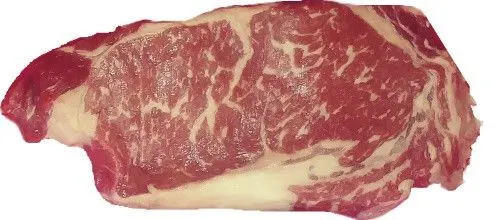
USDA Choice – $9.45
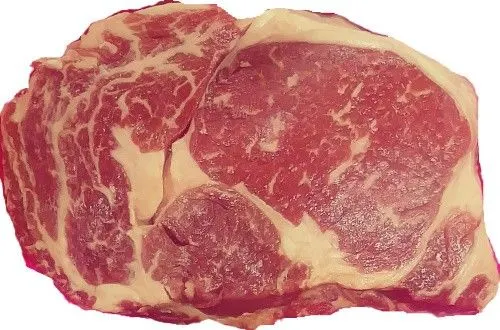
Grass-fed USDA Choice – $16.32
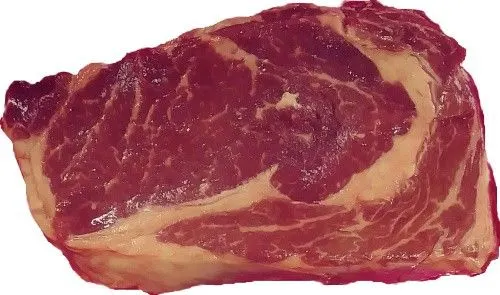
Angus USDA Choice – $13.43
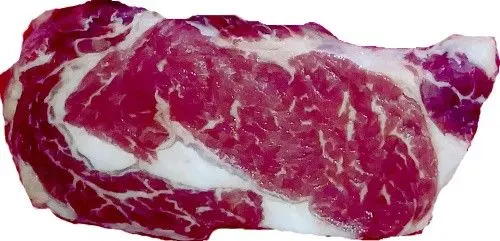
I cooked all of them for 4 1/2 minutes total, to an internal temp of about 145° for a nice medium.
For seasoning, I only added salt and pepper, grilling them on my Traeger Ironwood 650 grill at 400°, flipping once and rotating once on each side.
Here is a shot of the steaks resting after coming off the grill:
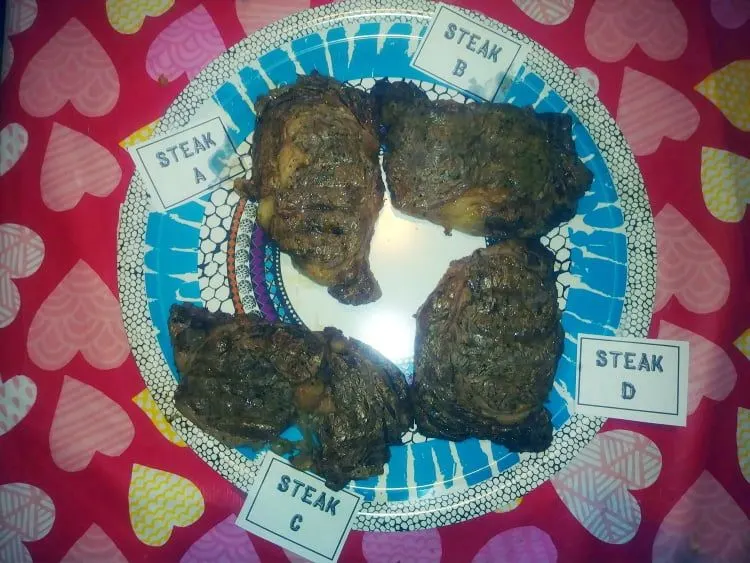
Then, I allowed each steak to rest off the grill for 5 minutes before cutting into it. I did not add steak sauce or anything that would cover the flavor of the meat or masque inferior flavor.
Final thoughts
In this article, we expanded on what it means to be a Prime steak.
We talked about the USDA grading process as well as where you can purchase Prime steak. Very few steaks are USDA Prime and they can be hard to come by at the grocery store. As a result, they are a bit pricier.
But in the end, we felt that USDA Choice Grass-Fed, which is a little cheaper than USDA Prime, was the tastier choice. Now, it’s up to you to decide!
- Crescent Roll Origins: Which Country Created It? - February 21, 2024
- What is the Origin of the Name Crescent Rolls? - February 21, 2024
- Are Pillsbury Crescent Rolls a Good Substitute for Puff Pastry? - February 21, 2024

